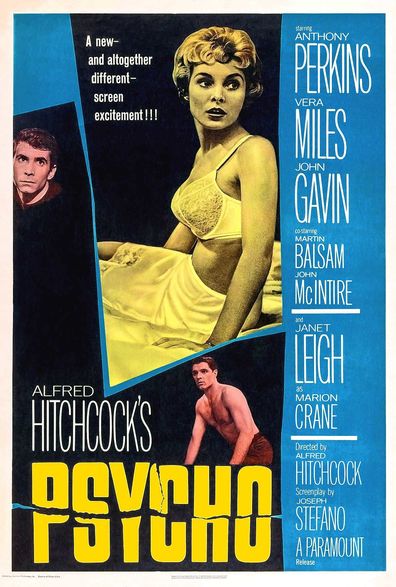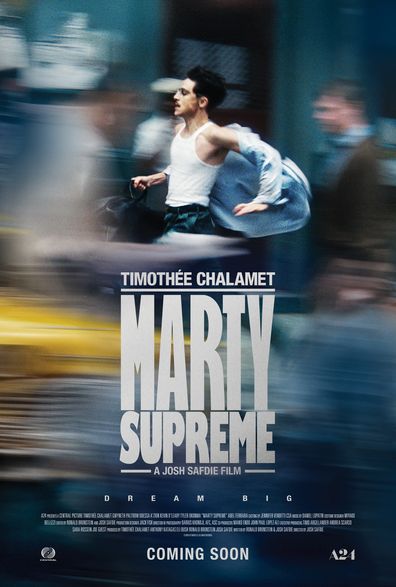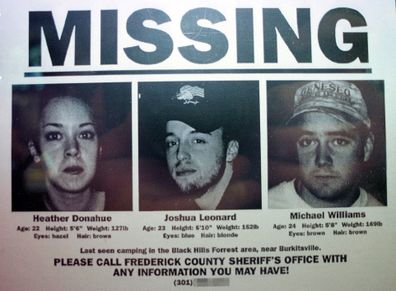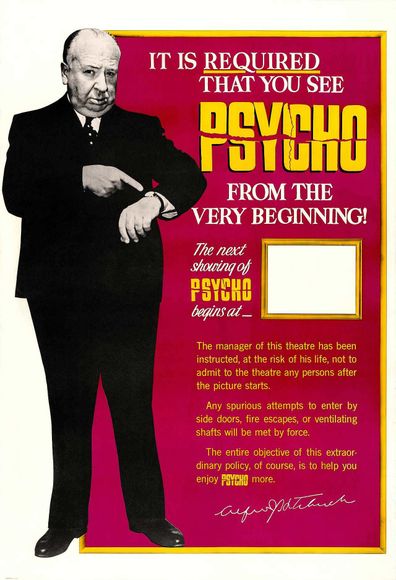
It’s no secret Hollywood has always been a highly competitive industry.
That’s not just in terms of landing a role, or getting your movie made, though – one of the toughest parts of the business is finding ways to make a project stand out among the rest.
That means, sometimes, to make your movie sing, you need a killer marketing team willing to get creative.

immediately, when we say creative, we’re not talking about a well-edited trailer.
No, what we’re talking about is the movie marketing ploys that take things to the next level. The ones that make you turn to your friends and say, “We simply have to see this.”
If none are coming to mind, that’s totally fine. Actually, it’s what we’re here for.
Keep scrolling to read all about some of the wildest movie marketing ploys ever used.
READ MORE: Billy Bob Thornton finally clarifies Angelina Jolie marriage rumour
READ MORE: Detail in Robert Irwin’s routine that keeps him close to Steve
READ MORE: The biggest stars to ever walk the red carpet at the ARIAs
Marty Supreme
“Culmination. Integration. Fruitionizing.” These three words have almost certainly secured Marty Supreme as a box office anthem.
The 2025 film, which lead star Timothee Chalamet has been training for since 2018, has given us a truly unique marketing strategy – one that has already become the star of several memes.
Ahead of the movie’s press tour, Chalamet shared an 18-minute recording of a Zoom meeting on Instagram.
At first, it seemed real. Chalamet – appearing as the believably pretentious, self-absorbed star of a multi-million-dollar blockbuster – was meeting with the marketing team behind the film to talk strategy.

But as the video went on, it became clear that either this video was a scripted marketing ploy, or Chalamet had gone insane.
The 29-year-old star was suggesting that, like Barbie, the marketing goes hard on a particular colour, presenting a shade of orange he claimed had taken his visual musician “six months to mock up”. (Spoiler alert: it was a regular orange square).
His other suggestions included having the Statue of Liberty, Eiffel Tower and Taj Mahal painted orange, and having a Marty Supreme blimp rain orange ping pong balls on the crowd at a track festival while his co-star Tyler the Creator performed.
At one point, speaking on the potential dangers of his tactics, he even said, “Someone losing an arm putting out the movie or someone gaining an arm intellectually, I’m a fan of the latter”.
The next day, the internet was flooded with memes from the video, and orange Marty Supreme blimps began appearing in the US.
The Marty Supreme team took a risk on an 18-minute satirical video in a world where netizens struggle to pay attention to a seconds-long clip, but ultimately, it paid off.
”Oh my attention span is fine,” read one comment on Chalamet’s post.
The Dark Knight
Marketing for 2008’s The Dark Knight began one year ahead of the movie’s release.
Of course, the Batman franchise already had a huge following and plenty of content, so Warner Bros. had to do something big to capture the fans’ attention.
Tapping into the world of alternate reality gaming (meaning the real world is used as the game space, rather than a console), over 11 million fans across the globe helped to bring Gotham to the real world.
It all began when the film’s website was launched, showing nothing but a bat symbol that, when clicked, directed users to a website called “I Believe Harvey Dent”, a political campaign site for Aaron Eckhart’s character.

While the website had no real function, over time, users came to notice it was being defaced, eventually revealing the first-ever image of Heath Ledger’s Joker.
At this point, fans were already beyond excited. But there was plenty more to come.
Attendees at San Diego Comic Con started finding “jokerised” dollar bills with clues leading to a website called Why So Serious, with messages from The Joker himself.
Then, when news of Ledger’s death shocked the world in January 2008, the marketing team had to readjust.
Fans were unsure if the campaign, which had been heavily focused on the Australian actor’s character, would continue.
Shortly after his death, Warner Bros. and the film’s director, Christopher Nolan, shared a tribute to the star on the film’s website.
It was simple, but effective, and the campaign continued.
Fans were eventually able to choose their own adventure, either campaigning for Harvey Dent, joining the Citizens of Batman group, or serving the Joker as one of his henchmen.
A newspaper called The Gotham Times was published, and fans were given clues to unlock new adventures, leading them in all different directions.
Eventually, the Citizens of Batman were led to gather in New York and Chicago on the weekend of the film’s premiere, where the bat signal lit up the skyline.
While the film’s predecessor, Batman Begins, made around $375 million, The Dark Knight ended up grossing more than $1 billion.
The Blair Witch Project
While it might not be the wildest ploy on this list, it’s fair to say that the team behind The Blair Witch Project revolutionised the world of movie marketing.
Back in 1999, this movie blurred the lines between fiction and reality, launching a website called blairwitch.com months ahead of the film’s release.
For a daily dose of 9honey, subscribe to our newsletter here.

The site included missing person reports for the film’s three stars – all of whom were unknown at the time – as well as newspaper reports, police reports, and interviews with their ‘families’.
The site told the story of the three young filmmakers who had disappeared in the Maryland woods while making a documentary about a mythical local who abducted and murdered kids.
It immediately captured the public’s attention, sparking conversations over whether it was real or not.
With the movie targeting college students, print papers were distributed on college campuses, along with missing person posters calling for help to find the three young filmmakers.
Adding to the intrigue, the actors’ IMDb profiles were changed to list them as “missing and presumed dead”.
The chatter around whether the film was fact or fiction generated so much interest that The Blair Witch Project ended up becoming one of the highest-grossing independent films ever.
Psycho
The marketing strategy behind Alfred Hitchcock’s cult classic Psycho forever changed the way we view movies.
Before the release of the thriller in 1960, cinemas played films on repeat, with the audience able to purchase a ticket and enter at any time during.
But, with the lead actress dying at the beginning of the movie and that famous plot twist, Hitchcock knew Pyscho was a film that needed to be viewed from beginning to end as a whole.
So, rather than the film’s marketing relying on the actors or story, it embraced what became known as the ‘Psycho Policy’.

Hitchcock made sure “every theatre manager, everywhere” knew not to allow anyone in after the start of a movie, with theatres beginning to advertise start times.
The entire campaign was built on secrecy, with the cast prohibited from doing press interviews and critics denied advance screenings.
The intrigue resulted in audience members lining up outside cinemas and forever changed the way we experience the movie theatre.
FOLLOW US ON WHATSAPP HERE: Stay across all the up-to-date in celebrity, lifestyle and opinion via our WhatsApp channel. No comments, no algorithm and nobody can see your private details.



